1. Introduction
Artificial Intelligence (AI) presents transformative opportunities for organizations, offering enhanced decision-making, operational efficiency, customer engagement, and innovation potential. As the Chief Information Officer (CIO), leading the enterprise-wide AI strategy requires a structured, business-aligned approach that mitigates risk, ensures scalability, and delivers measurable value.
This document outlines a strategic approach the CIO should adopt to implement AI effectively and responsibly within the organization.
2. Content
2.1 Vision and Alignment with Business Strategy
- Define Business Objectives: Align AI initiatives with the overall strategic goals (e.g., cost reduction, customer experience, innovation, or risk mitigation).
- Executive Sponsorship: Secure CEO and board-level commitment to drive adoption and investment.
- AI Use Case Prioritization: Secure CEO and board-level commitment to drive adoption and investment.
2.2 Capability Assessment and Readiness
- Data Maturity Assessment: Evaluate the organization’s data quality, governance, availability, and security posture.
- Skill Gap Analysis: Assess in-house AI capabilities including data science, machine learning, cloud computing, and analytics.
- Infrastructure Readiness: Ensure scalable computing power (e.g., cloud-based AI platforms) and robust network architecture.
2.3 Governance and Ethical Framework
- AI Governance Body: Establish a cross-functional AI steering committee to oversee policies, funding, and risk management.
- Ethical AI Principles: Define ethical standards around transparency, fairness, accountability, and bias mitigation.
- Regulatory Compliance: Ensure AI deployments comply with data privacy laws (e.g., GDPR, POPIA).
2.4 Implementation Roadmap
- Phase 1 – Pilot Projects: Launch limited-scope pilot projects to test concepts and refine approaches.
- Phase 2 – Scale and Integrate: Operationalize successful pilots and integrate into core systems (e.g., ERP, CRM).
- Phase 3 – Continuous Optimization: Establish feedback loops, retraining models, and monitoring performance.
2.5 Change Management and Culture
- AI Awareness Programs: Educate employees on the value and potential of AI through internal workshops and communications.
- Human + Machine Collaboration: Redefine roles and support workforce transitions through upskilling and reskilling.
- Incentivize Innovation: Encourage teams to propose and test AI-driven solutions through internal hackathons or innovation labs.
2.6 Technology and Partner Ecosystem
- Build vs Buy Strategy: Decide on custom AI model development versus leveraging third-party tools (e.g., Azure AI, Google Vertex AI).
- Strategic Partnerships: Collaborate with AI vendors, academic institutions, and start-ups for access to talent and advanced solutions.
- Toolchain Standardization: Adopt enterprise-wide tools for data labeling, model training, deployment, and monitoring.
Summary
AI implementation is not solely a technology initiative, it’s a strategic transformation. A successful AI journey requires leadership from the CIO to align initiatives with business goals, foster a data-driven culture, and ensure governance. It involves thoughtful investment in talent, infrastructure, and partnerships while maintaining ethical and compliance standards.
First Steps for the CIO
- Formulate an AI Strategy Document: Outline vision, goals, and key use cases.
- Establish the AI Governance Council: Define roles, responsibilities, and decision-making authority.
- Conduct a Data and Capability Audit: Assess data assets, infrastructure readiness, and skills inventory.
- Initiate Pilot Projects: Select 1–3 high-value, low-risk pilots aligned with business priorities.
- Launch Communication Campaign: Promote organizational awareness and build trust in AI.
- Define KPIs for Success: Establish metrics to track business impact, adoption, and model performance.
An AI (Artificial Intelligence) roadmap and strategy is not a one-time initiative, it is a continuous journey with limitless potential tailored to your industry. Embrace the evolution
Article by Martin Pretorius — Director at TAU ICT Consulting.
Change is hard because people overestimate the value of what they have and underestimate the value of what they may gain by giving that up.
– James Belasco and Ralph Stayer
